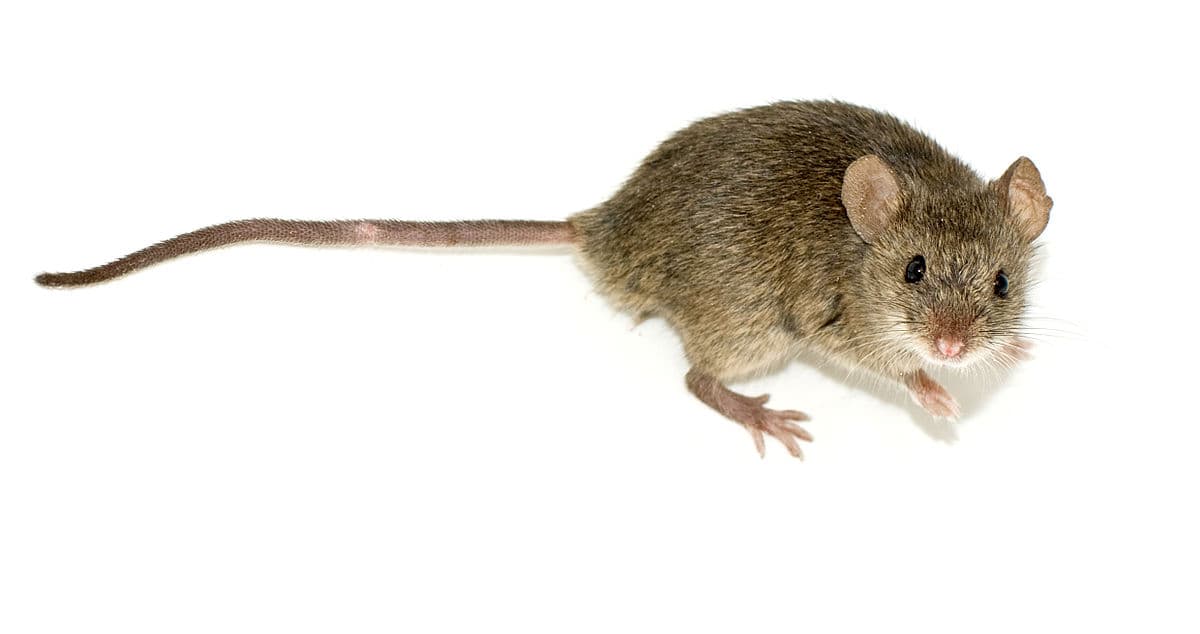House Mouse
Mus musculus
RodentsSmall rodent, 2-1/2 to 3-1/2 inches long with large ears and small eyes. Gray to brown fur. Most common indoor rodent. Nibbles on many foods, leaving characteristic damage. Can squeeze through 1/4-inch openings. Droppings are brown, the size and shape of rice grains. Chew marks found in woodwork, walls, and food containers.

Control Methods
Recommended methods for controlling this pest
| Method | Type | Effectiveness | Requirements |
|---|---|---|---|
| Snap Trap Placement for Rodents | Mechanical | None | |
| Tamper-Resistant Bait Station Deployment | Chemical | Required | |
| Door Sweep Installation | Mechanical | None | |
| Pipe Penetration Sealing | Mechanical | None | |
| Cabinet Gap Sealing | Mechanical | None | |
| Clutter Reduction | Cultural | None | |
| Food Storage in Sealed Containers | Cultural | None | |
| Threshold and Sweep Inspection and Repair | Mechanical | None | |
| Weep Hole Vent Installation | Mechanical | None | |
| Expansion Joint Sealing | Mechanical | None | |
| Glue Board Monitoring Stations | Non-Chemical | None | |
| Multi-Catch Rodent Trap Deployment | Mechanical | None | |
| Rodent Exclusion for Vents and Weep Holes | Mechanical | None | |
| Rodent Tracking Powder Application | Chemical | Required | |
| Advanced Rodent Proofing | Mechanical | None |
Common Harborage Locations
Where to find this pest during inspections
| Location | Why Found There | Priority |
|---|---|---|
| Under Kitchen Sinks | Moisture from leaks and condensation, warmth from drain water, darkness, food debris washed down, and minimal disturbance. | Critical |
| Kitchen Cabinets | Proximity to food sources, crumbs and spills, warmth from nearby appliances, dark undisturbed corners. | Critical |
| Pantries | Concentrated food sources, packages provide harborage, often undisturbed for long periods, dry environment. | Critical |
| Wall Voids | Protected from disturbance, temperature controlled, provides nesting material and travel routes throughout structure. | High |
| Basements | High humidity, cooler temperatures, stored items, potential for flooding, entry point from outside. | Critical |
| Crawl Spaces | Direct earth contact, very high humidity, minimal disturbance, abundant hiding spots, poor ventilation. | Critical |
| Attics | Warmth in winter, nesting materials (insulation), minimal disturbance, entry from roof penetrations. | High |
| Behind Refrigerators | Consistent warmth from compressor motor, moisture from condensation, food debris falls behind, difficult to clean. | Critical |
| Behind Stoves | Heat from cooking, grease splatter, food debris, limited cleaning access, constant warmth. | Critical |
| Behind Washers & Dryers | Warmth from dryer, moisture from washer, lint accumulation, minimal disturbance, dark space. | Medium |
| Electrical Outlets | Warmth from electrical current, entry point to wall voids, protected hiding spot. | Medium |
| Electrical Panels | Significant warmth from electrical load, protected enclosure, rarely disturbed. | High |
| Indoor Garbage Cans | Direct food source, moisture, organic waste, daily accumulation of debris. | High |
| Floor-Wall Junctions | Natural collection point for debris, provides shelter, and travel routes. | Medium |
| Drop Ceilings | Undisturbed environment, warmth from lighting, provides routes between rooms. | Medium |
| Exterior Foundation | Entry points to structure, protection from weather, moisture accumulation. | High |
| Soffit Vents | Direct entry to attic, often screened inadequately, warmth escapes through vents. | Medium |
| Pet Food Bowls | Direct food source, water source, spilled kibble attracts pests. | Medium |
| Door Thresholds | Common entry point, gaps under doors, light attraction, temperature differential. | High |
| Storage Boxes & Clutter | Undisturbed environment, material for nesting, harborage between items, food source (cardboard/paper). | Medium |
Important Disclaimer: The information provided in this knowledge base is for educational and reference purposes only. Pest management professionals should always consult current product labels, Safety Data Sheets (SDS), manufacturer instructions, and applicable local, state, and federal regulations as the definitive source of truth. Product formulations, application methods, safety requirements, and regulations may change over time. This information may be out of date and should not replace professional judgment, proper training, or required licensing and certifications.